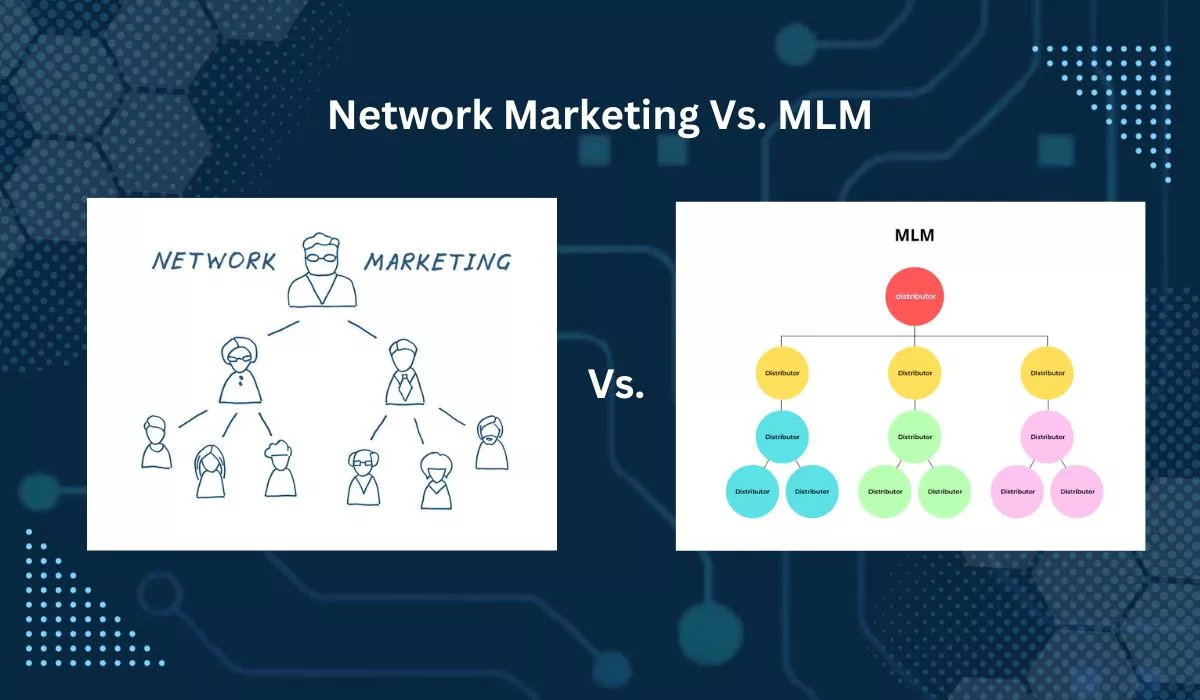Is there any difference between Network Marketing vs. MLM?
People venturing into the direct selling industry are often exposed to different closely related terms, MLM, party plans, network marketing, etc. It gets confusing to differentiate what means what and where it applies. The biggest confusion is between the two almost interchangeably user terms, Multi Level Marketing(MLM) and Network Marketing.
Although people often describe them as the same, some minute dissimilarities become apparent when you dig deeper. We will put Network Marketing vs. MLM against each other and see how they differ from each other or whether they represent different concepts. Let’s dive in!
What is Network Marketing?
Network marketing represents a key element of the direct sales industry where individuals become a part of an organization and sell products on its behalf. Likewise, members can also bring other people and together they can bolster the sales efforts.

What is Multi-Level Marketing?
Multi-level marketing is a subtype of network marketing that is characterized by its compensation plan and the complexity of the underlying network. The compensation plan defines the earnings of each member and how they will be compensated for their work. Contrary to network marketing, MLM involves several levels of commissions and also includes various bonuses and rewards.

Network Marketing vs. Multi-Level Marketing – The Main Differences
Both MLM and network marketing are nearly identical concepts, but a few differences are still apparent.
Let’s explore these differences;
1. Recruitment Focus
Member recruitment is a core element of both MLM and network marketing. This is how they differ in this regard;
Network Marketing
In network marketing, the primary emphasis is on product sales or providing services to consumers. The primary goals are to achieve sales and build a consumer base. Although recruitment is involved in extending the team, it’s secondary in network marketing.
Multi-Level Marketing
Contrary to network marketing, MLM places much more emphasis on recruitment. While sales are the ultimate goal here too, distributors are also encouraged to build a large downline. The idea is simple – the larger the downline, the more will be sales.
2. Compensation Structure
Let’s see how commission structure slightly differs in MLM and network marketing;
Network Marketing
Network marketing involves a balanced compensation structure. Commissions come from direct sales and team-building efforts, while the commission structure is simpler and easy to understand.
Multi-Level Marketing
In MLM, the commissions are heavily tied to the recruitment efforts and sales made by the downline. Commission structures are often complex with an array of rewards and bonuses associated with downline extensions and product sales. Here, the emphasis is more on building and managing a multilevel organization.
3. Types
In this segment, we will check out the various types of MLM and network marketing.
Network Marketing
Network marketing can be of two types – Single-tier network marketing plan and two-tier network marketing plan. The single tier only involves product selling and a single-level referral system. On the other hand, two-tier network marketing allows both selling and recruitment, and the network goes two levels deep.
Multi-Level Marketing
In contrast, multi-level marketing involves networks of varying levels. The compensation plan used by the company defines the width and depth of the network structure and it often varies in complexity.
Wrap Up
While MLM and network marketing appear similar on the surface there are some key differences. Both terms do share some common elements, however, they differ in the degree of emphasis on recruitment and the associated compensation structure. While MLM focuses more on building a larger team and multi-level network structure, network marketing keeps things simple.
It revolves around product sales and building a strong consumer base keeping recruitment as a complementary element. So, do thorough research and understand the inherent workings of both business models before considering any opportunity that might come your way.

